
Siena Cathedral - Table of Contents .................................. Architecture Around the World
Exterior - Siena Cathedral/Duomo di Siena

Siena
Cathedral - Table of Contents ..................................
Architecture
Around the World
Exterior - Siena
Cathedral/Duomo di Siena
2020 photos
Facade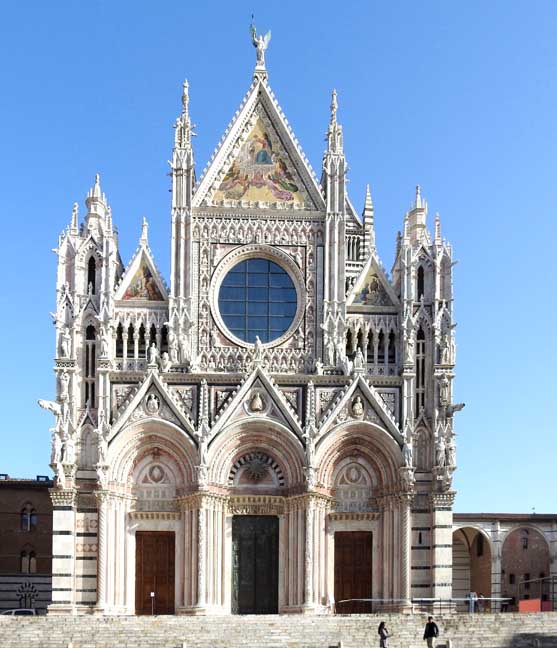 Italian Gothic style (much less emphasis on stained glass compared to continental Gothic) ... "Extending south [right] from the cathedral is the "Facciatone," a great facade built as part of a major expansion to Siena Duomo in the 14th century." - Sacred Destinations: Siena Duomo (online April 2020) ... The exterior and interior are constructed of white and greenish-black marble in alternating stripes, with the addition of red marble on the façade. 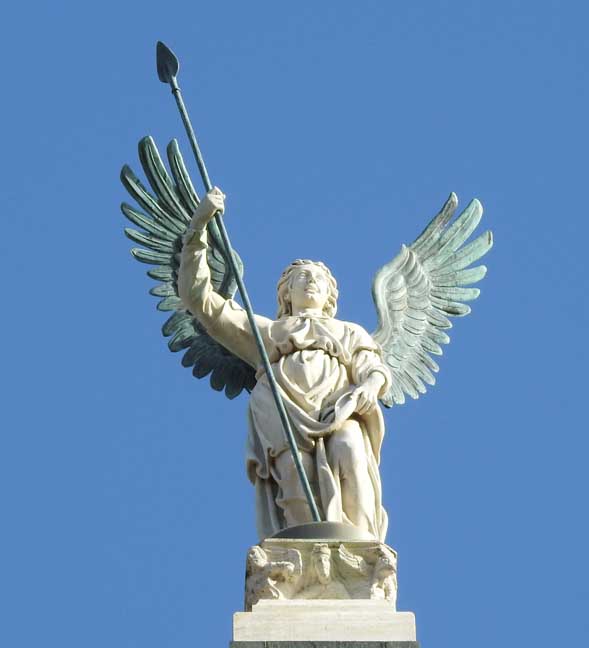 Michael, the archangel warrior ... "All the statues on the facade, many of them designed by Giovanni Pisano, were replaced with replicas in the 1960s" - Sacred Destinations: Siena Duomo (online March 2020) 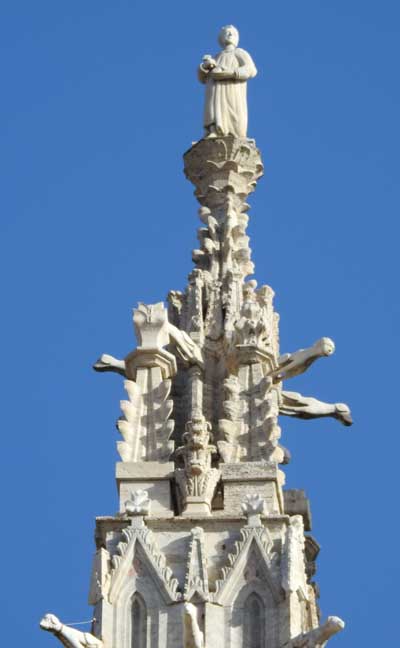 Crockets ... Grotesques(?)  "Coronation of Mary" mosaic 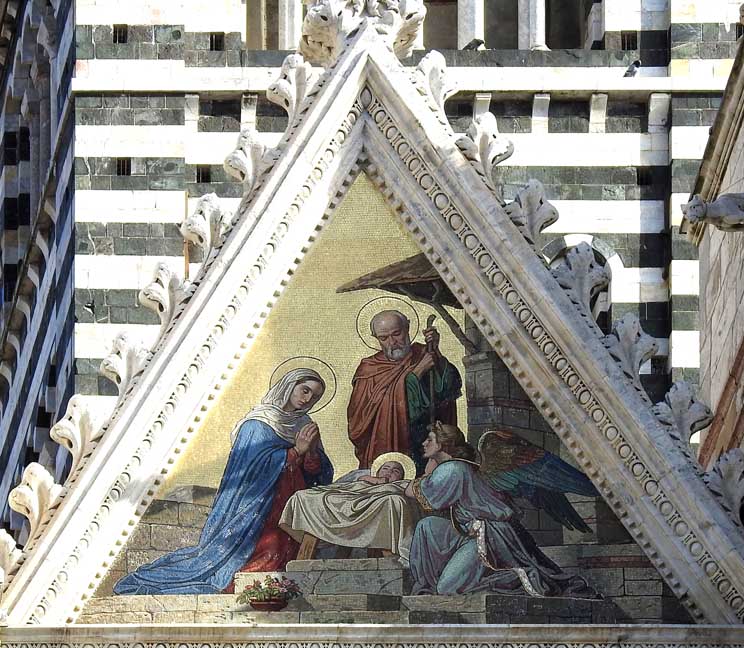 Foliated crockets on pediment ... Egg-and-dart and dentil moldings on pediment ... "Birth of Jesus" mosaic 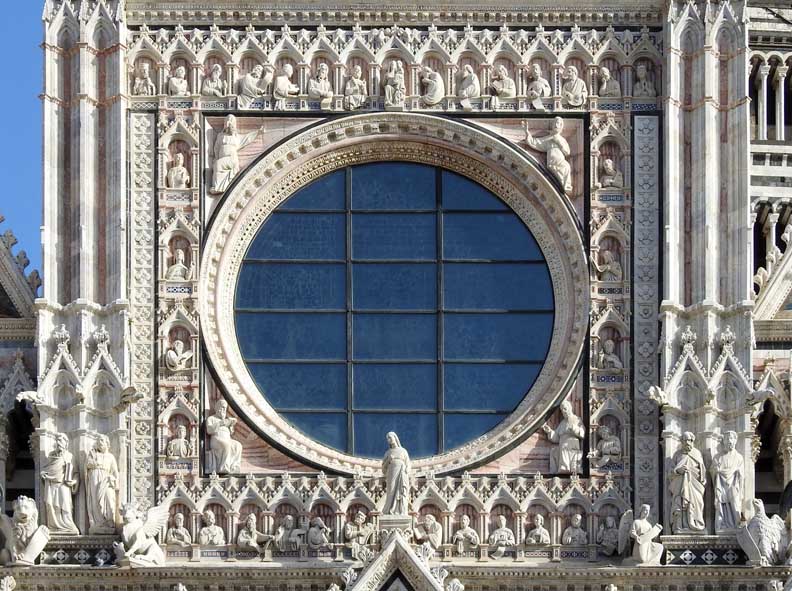 "The large round window is surrounded by busts of 36 patriarchs and a statue of the Madonna and Child." - Sacred Destinations: Siena Duomo (online April 2020)  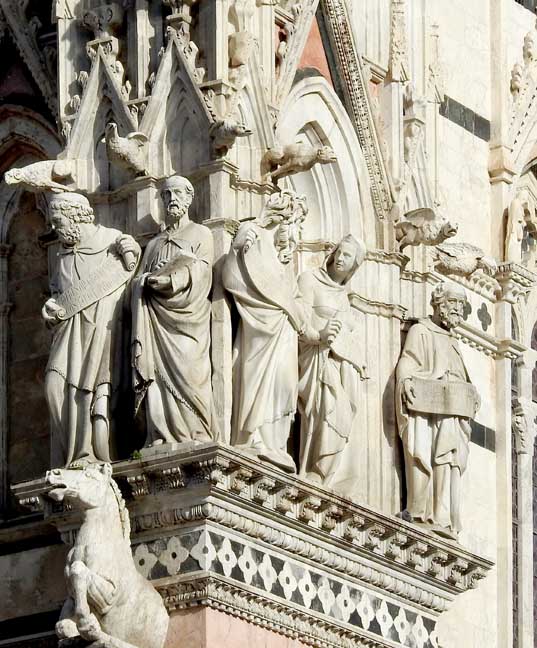 The Four Evangelists  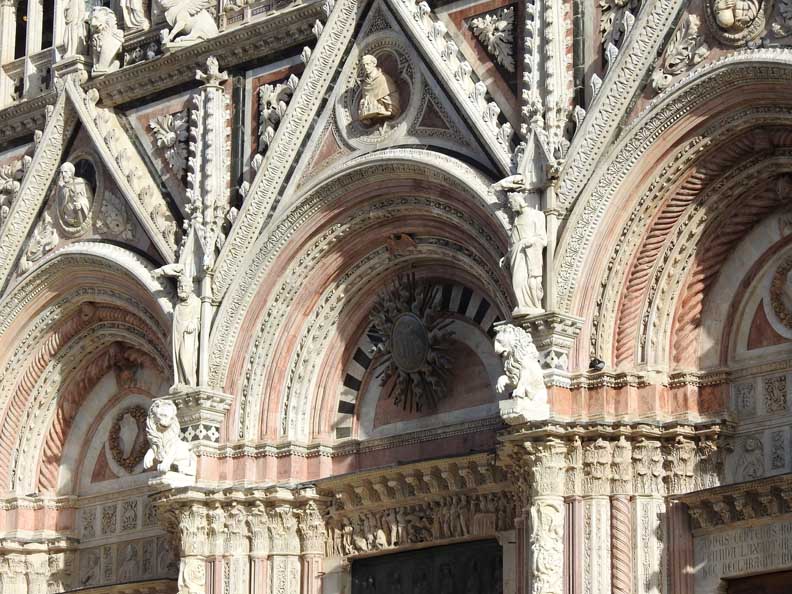 Compound arch ... The exterior and interior are constructed of white and greenish-black marble in alternating stripes, with the addition of red marble on the façade.   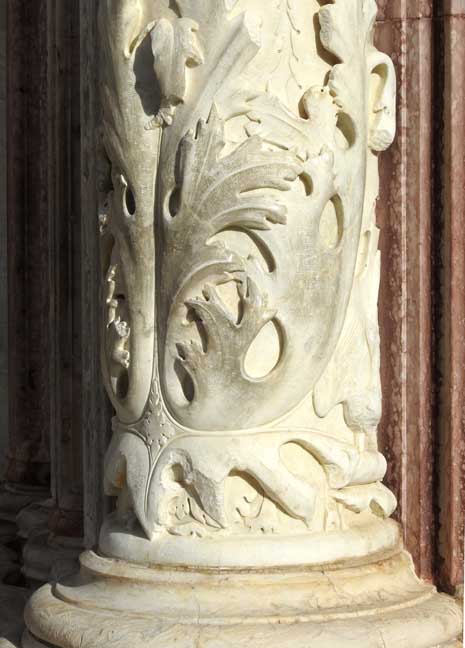 Acanthus leaves decorate the column shaft Marble floors "Siena Cathedral contains
numerous masterpieces from every age, but its marble
mosaic inlay and graffito floor is in many ways its most prized
possession. Giorgio Vasari certainly considered it the 'most
beautiful..., largest and most magnificent floor ever made'. The floor
we see today is the product of a programme implemented between the 14th
and the 19th centuries.
"The technique used to transpose the various artists' ideas onto the floor is known as graffito and mosaic marble inlay. Simple to begin with, the technique gradually achieved an astonishing degree of perfection. The first inlays were traced out on white marble slabs using a chisel and a drill and then filled in with black stucco, a technique called 'graffito'. This was supplemented by a technique based on placing coloured marble pieces together using the marquetry method, a technique known as marble mosaic inlay." - Siena Opera Della Metropolitana: Cathedral Floor (online July 2021) 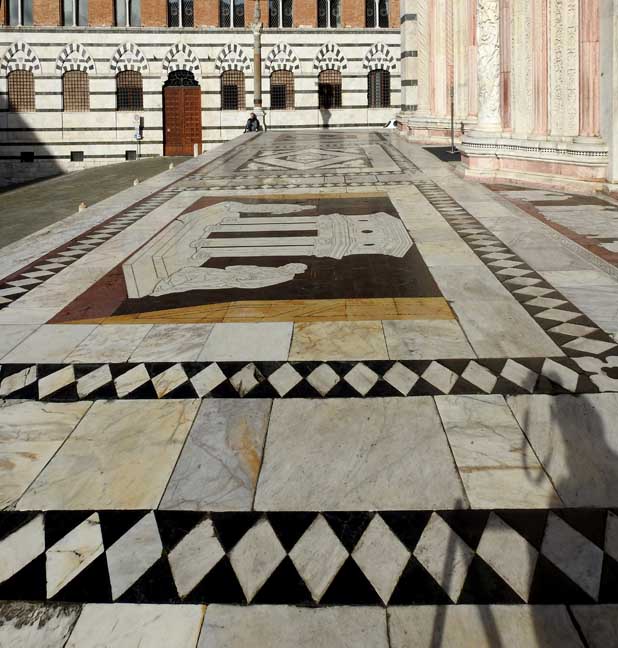 Four details below: 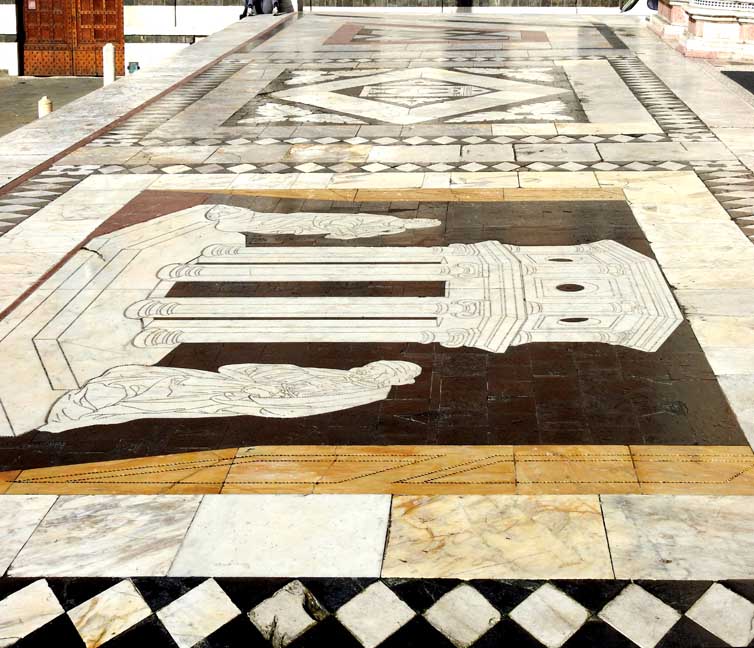 Detail #1 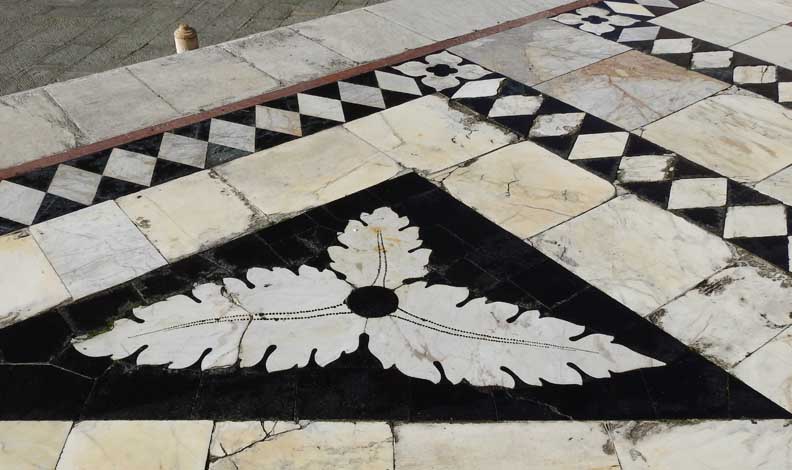 Detail #2  Detail #3 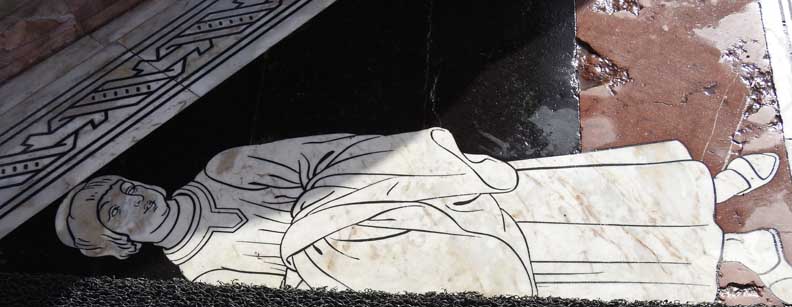 Detail #4 |
|
Facade
Animals and
Grotesques Note Corinthian capitals in lower right  Lion  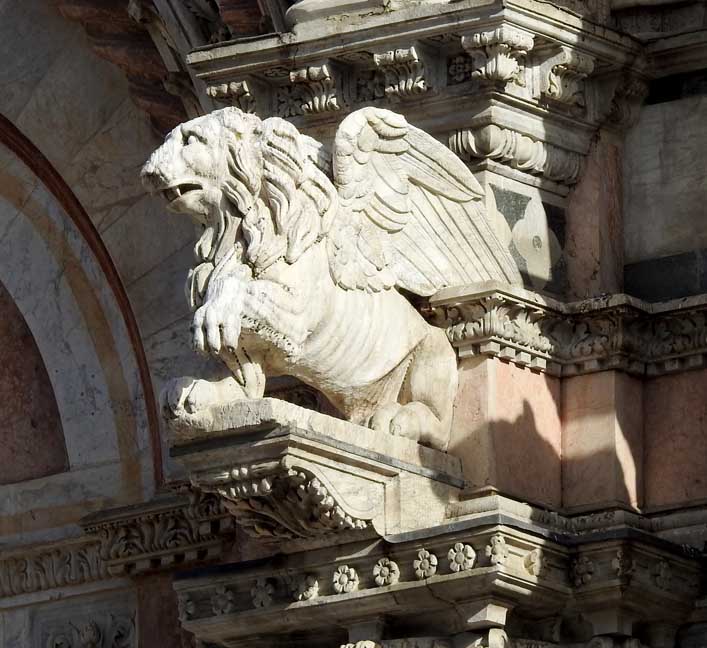 Winged lion is symbol of Mark the Evangelist  Gargoyles 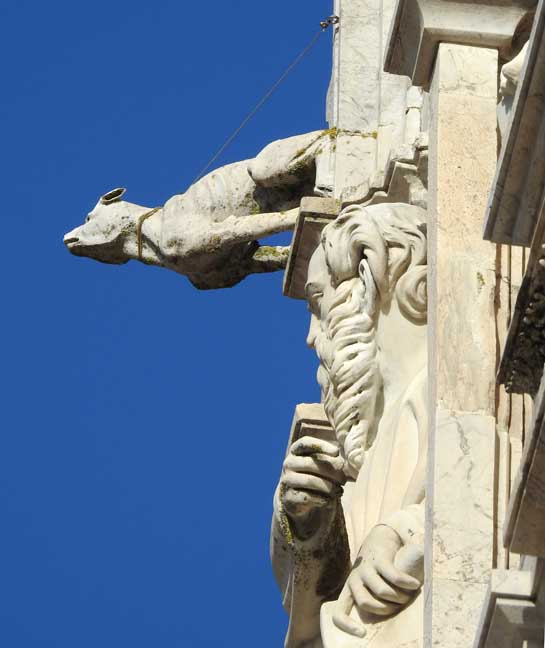 Gargoyle(?) 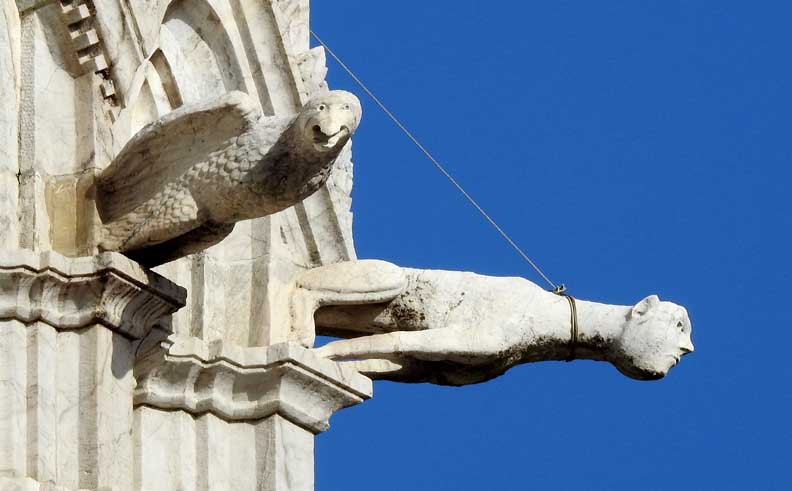 Grotesques |
|
Campanile/Bell tower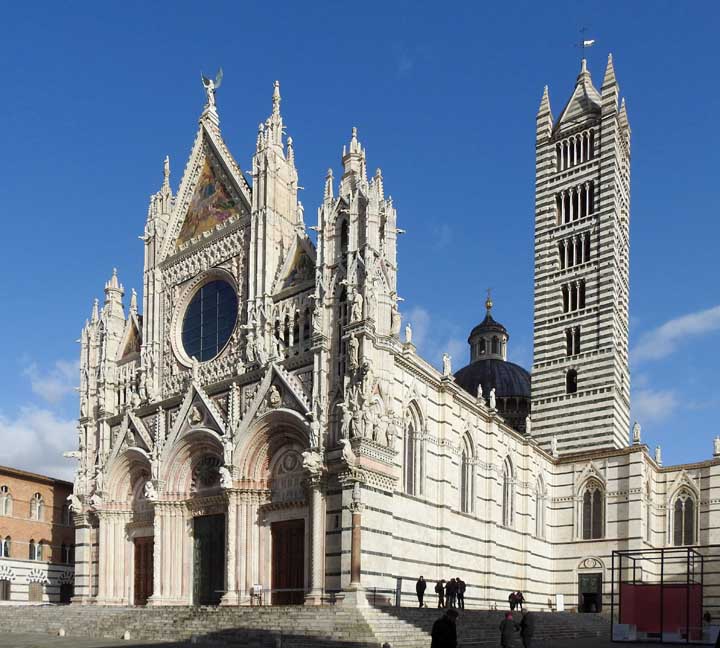 "The Duomo's unique black-and-white striped campanile dates from 1313, but reflects the Romanesque style. The tall, square bell tower has increasing numbers of round-headed arcades with each level and culminates in a pyramid-shaped roof." - Sacred Destinations: Siena Duomo (online March 2020) 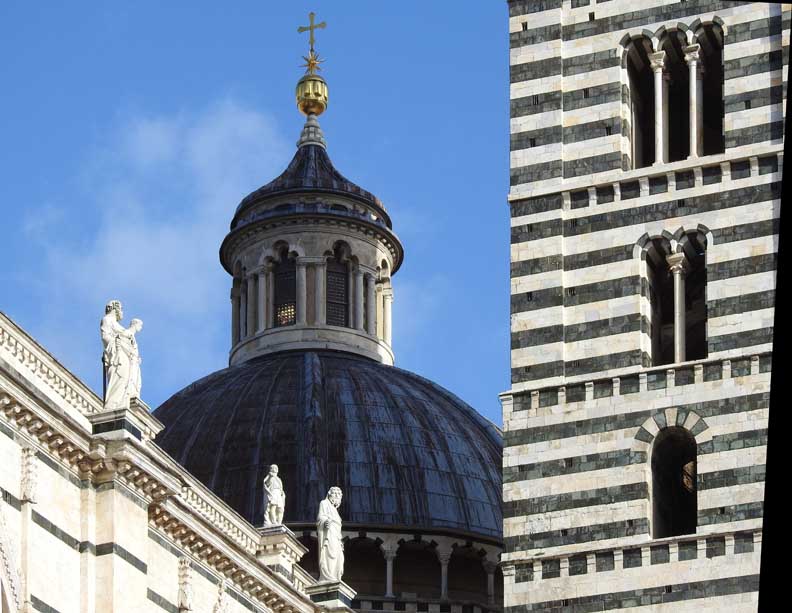 Cross finial ... Lantern features trefoil arches ... Renaissance rounded arches on campanile 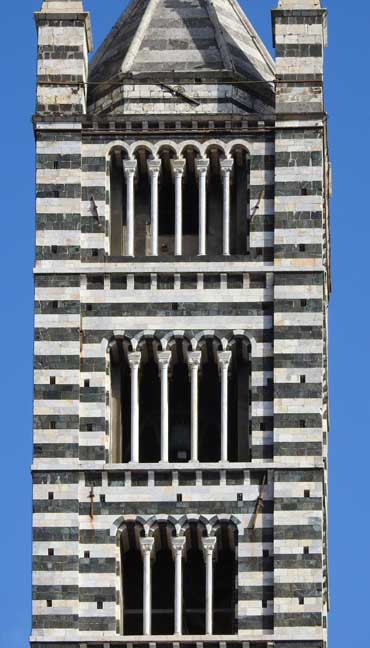 5-column arcade ... 4-column arcade ... 3-column arcade 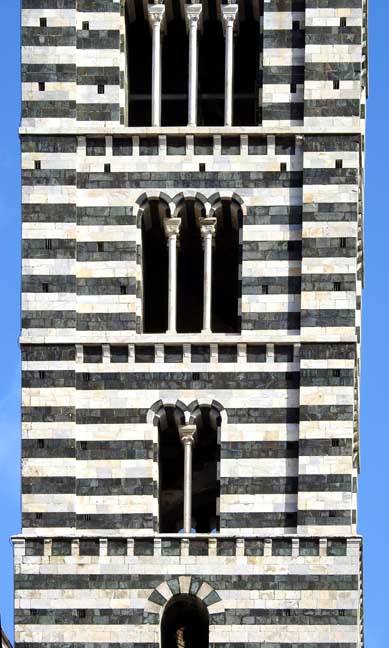 Black-and-white voussoirs |
|
|
